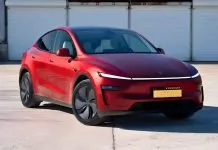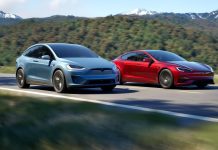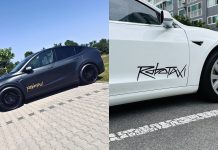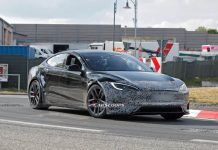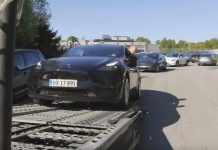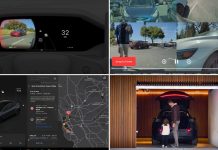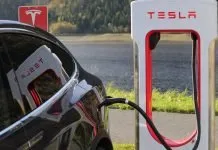Tesla released its Full Self Drive (FSD) beta update to a select few users in the USA in October. However, as expected, there were a few bugs in the system. Since then Tesla has released multiple updates to fine-tune the system and it has definitely improved FSD. Lombard Street in San Francisco is famous for being one of the most crooked streets in the world. The street is a one-way road that is 600 feet (180m) long. The hill has a natural gradient of 27 degrees. To solve this issue Lombard Street was constructed in 1922. We have previously reported about reactions to Tesla’s FSD project before.
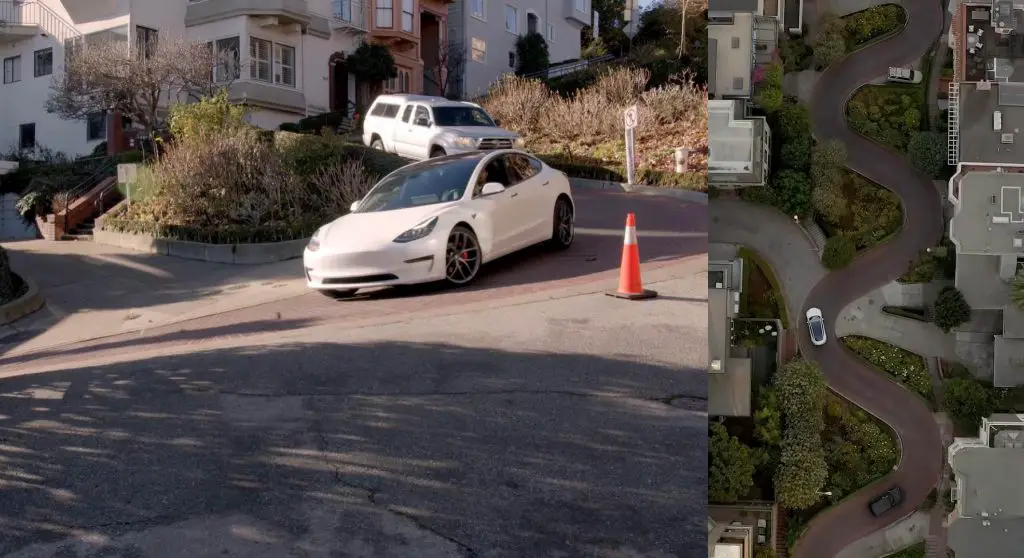
Tesla Full Self Drive Beta takes on San Francisco’s famous Lombard Street
The First Attempt
Over a month ago, the FSD underwent the same test. However, in October, the car wasn’t able to handle the 8 hairpin bends that Lombard Street threw at it. The speed limit of 15 mph (24 kph) was too high to navigate through the twisty route. The driver had to intervene on multiple occasions to ensure that the car doesn’t end up in the wall. The lack of kerbing in front of driveways confused the system as well. While it was impressive to see the car attempt the extremely difficult route, it was obvious that improvements were necessary.
The Second Attempt
The second attempt happened less than a week ago. It was the same Model 3, only this time it had already received 5 software updates for FSD. This made the proposition an interesting one. This time around the car had a speed limit of 5 mph (8 kph), which is the government-mandated speed limit for Lombard Street. On paper, the car was already looking better equipped than a month ago. During this attempt, the car started a bit more gingerly. It was more surefooted than in October and was looking more comfortable handling the twisty bits. Driver interventions were almost not necessary this time.
The driveway did confuse the car yet again. However, a creative solution was employed for this problem. The car was diverted from the driveway using a traffic cone. The presence of the traffic cone ensured that the car didn’t go down that road. After that, the car navigated the rest of the road without any hiccups.
There were a couple of things which could still improve. The rear wheels get too close to the kerbs on the street which provides a few tense moments in the driver’s seat. However, considering the speed of development, it is safe to say that these issues will be ironed out pretty soon
The significance of this test
This test might seem like an unnecessary one. However, the level of improvement in the car’s software in less than 2 months’ time is amazing. The way the car steers inspires confidence. The control that the car has over itself is almost uncanny. This proves that the FSD beta program is developing continuously. The amount of effort that Tesla is putting in is commendable. What is particularly brilliant is how the software is updated to suit a specific type of road. Their commitment to their plans is noteworthy.
FSD has impressed the whole world with the progress that it has made. When it was released initially, FSD had quite a few bugs. However, over time Tesla has updated the software. The speed of updating the software is awe-inspiring. A feature like this is exactly what has caught the eye of the public. Tesla is making mainstream manufacturers seem ancient by providing such features. Their ability to impress us keeps improving.



